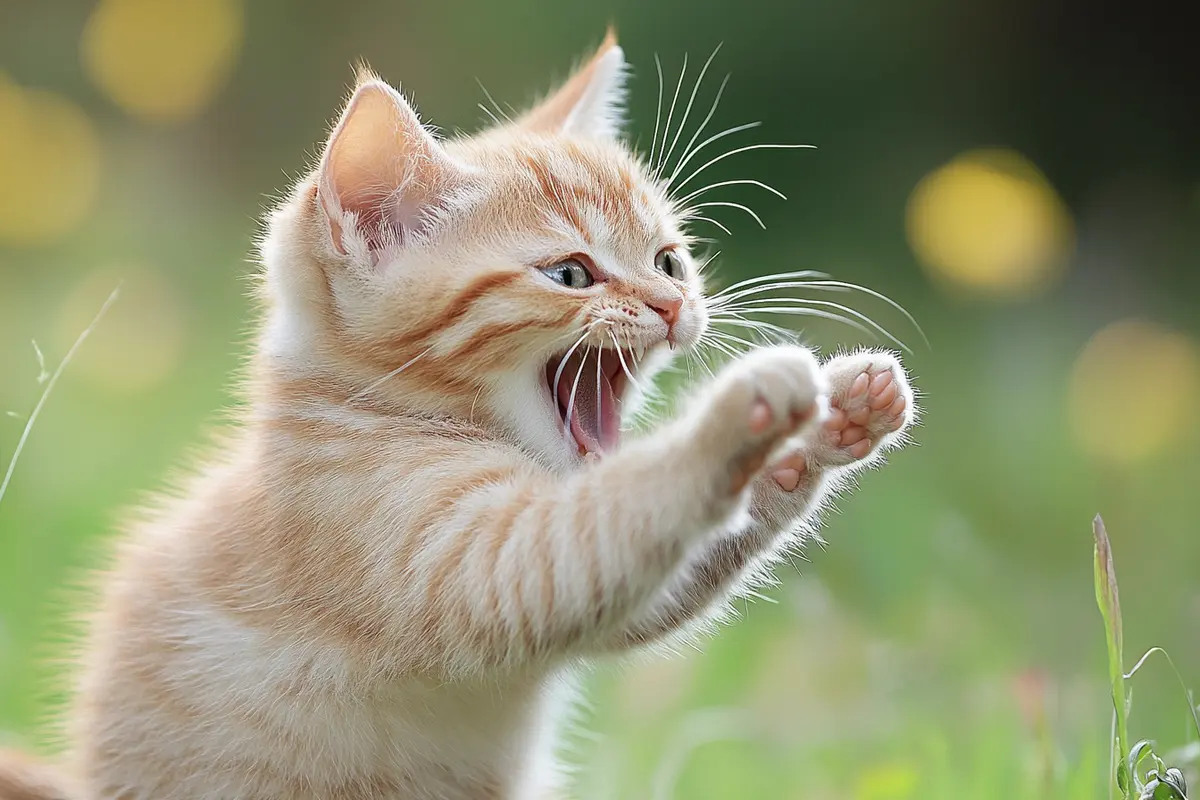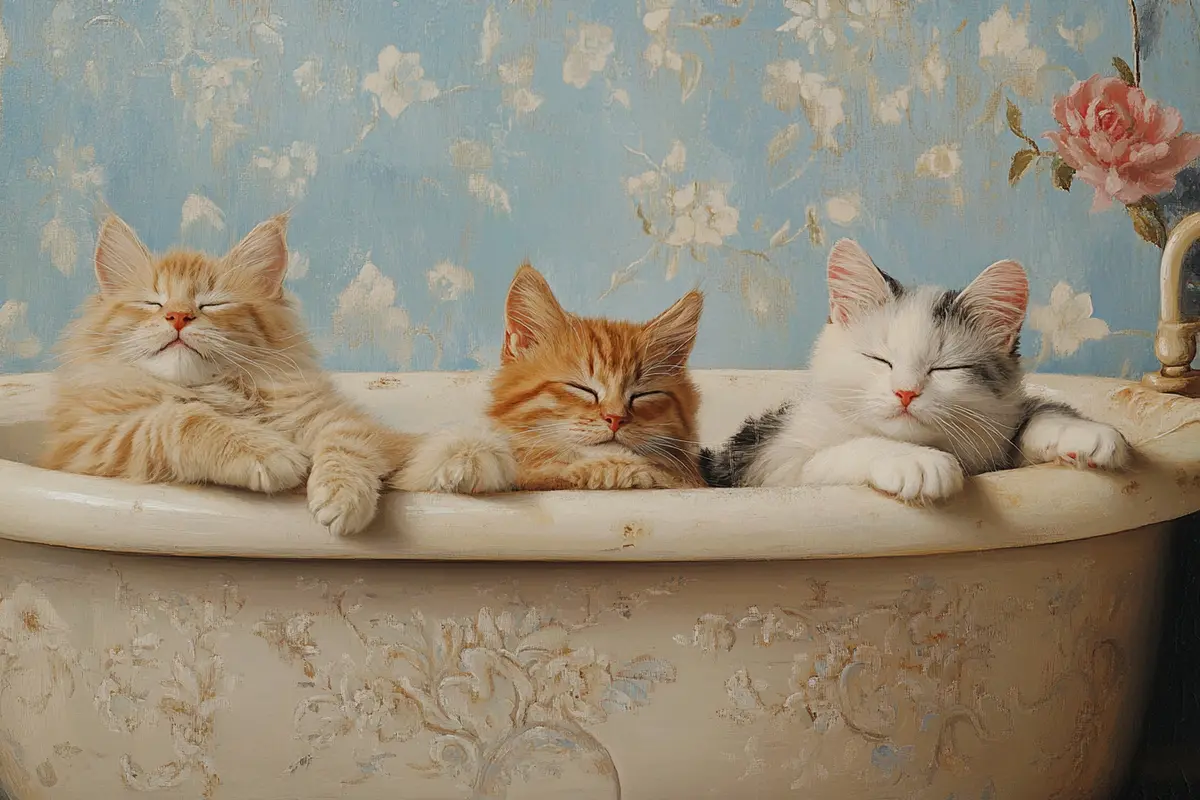Table of Contents
The Vital Importance of Cat Grooming
Grooming is far more than just keeping your cat looking pretty. It’s an essential part of their overall well-being. Regular grooming helps maintain a healthy coat. It also helps prevent painful mats and tangles. Furthermore, it allows you to check for any health issues early. A consistent grooming routine strengthens the bond between you and your furry companion. Therefore, grooming is an important part of responsible cat ownership. You might also like 12 Powerful Lessons of Kindness, Friendship, and Resilience from Cats
Essential Grooming Tools Every Cat Owner Needs
To make grooming easier and more effective, you need the right tools. Having the proper equipment ensures both your safety and your cat’s comfort. Therefore, gather these essential grooming supplies:
- Brushes: A variety of brushes is needed for different coat types. For example, a slicker brush is great for removing loose fur. A comb can help with tangles. A rubber brush can provide a gentle massage while grooming.
- Nail Clippers: Cat-specific nail clippers are essential for safe trimming. Make sure they are sharp and in good condition. Have styptic powder on hand to stop bleeding if you accidentally cut the quick.
- Cotton Balls and Pads: These are needed for cleaning ears and eyes. Use a gentle, cat-safe cleaner.
- Ear Cleaning Solution: This is for safely cleaning out excess ear wax. Always be gentle and avoid going too deep.
- Cat Shampoo: Choose a shampoo made specifically for cats. Human shampoo may irritate their skin. Use only when necessary.
- Toothbrush and Toothpaste: Use a cat-specific toothbrush and toothpaste for dental care. Avoid human products.
- Treats: Reward your cat with treats during and after grooming to make it a positive experience.
Coat Maintenance: Effective Brushing Techniques for Your Cat
Regular brushing is essential for proper coat maintenance. Brushing helps to remove loose hair. It also prevents mats and keeps their coat healthy. Furthermore, it helps reduce shedding around your home. The frequency of brushing depends on your cat’s coat type. Therefore, adjust your routine as needed.
- Short-haired cats: Brush them once or twice a week. This helps to remove loose hair and keep their coat shiny.
- Long-haired cats: Brush them daily. This helps to prevent mats and tangles. Additionally, it keeps their coat free of debris.
- Medium-haired cats: Brush them several times a week. This helps to maintain their coat’s health and appearance.
Start brushing gently, moving from the head to the tail. Pay special attention to areas prone to matting, like behind the ears and under the legs. Therefore, make grooming a pleasant experience for your cat.
Coat Maintenance: Knowing When and How to Bathe Your Cat
Cats are meticulous groomers. However, they may still need a bath occasionally. For example, if your cat gets into something messy, a bath is necessary. Furthermore, certain skin conditions might require more frequent bathing. Therefore, know when and how to properly bathe your cat.
- Use lukewarm water.
- Wet your cat’s coat gently.
- Apply a small amount of cat shampoo.
- Lather well, avoiding the eyes, ears, and nose.
- Rinse thoroughly until all shampoo is gone.
- Towel dry your cat.
- If your cat tolerates it, use a low heat setting on a hairdryer.
- Reward them with a treat after the bath.
Claw Care: Safe and Proper Claw Trimming Methods
Trimming your cat’s claws is an important part of grooming. Overgrown claws can cause discomfort. They can even grow into the paw pads. Therefore, trim their claws every few weeks. This helps to keep them healthy and comfortable.
- Use cat-specific nail clippers.
- Hold your cat’s paw gently.
- Locate the quick, which is the pink area inside the nail.
- Avoid cutting the quick. This will cause pain and bleeding. Only trim the sharp tip of the claw.
- If you accidentally cut the quick, use styptic powder. This will quickly stop the bleeding.
Initially, trimming claws can be challenging. However, with patience, it will become a routine for both of you. Therefore, make it a part of your grooming schedule. You might also like Understanding Cat Behavior
Claw Care: The Importance of Providing Scratching Options
Cats have a natural instinct to scratch. This helps them to maintain their claws and stretch their muscles. Providing scratching surfaces is essential for claw care and your furniture’s survival. Therefore, offer your cat a variety of options.
- Scratching posts of different heights.
- Scratching pads made of various materials.
- Cardboard scratchers that can be easily replaced.
Place these scratching options in areas where your cat spends time. Encourage use by applying catnip to them. Therefore, your cat will use these rather than your furniture.

Ear and Eye Care: Recognizing and Addressing Potential Issues
Regular checks of your cat’s ears and eyes are important. This helps you detect potential health issues early. Check their ears for redness, discharge, or odor, which may indicate an infection. Additionally, look for any discharge or redness in the eyes. If you notice any of these signs, consult your vet.
- Use cotton balls or pads and a cat-safe ear cleaning solution to gently clean ears.
- Use a damp cotton ball to wipe away any eye debris gently.
- Avoid inserting anything too far into the ear canal.
- Seek veterinary attention if you notice any persistent issues.
Therefore, regular ear and eye care is crucial for your cat’s health.
Dental Hygiene: Simple Steps to Maintain Your Cat’s Oral Health
Dental hygiene is often overlooked, but it’s crucial for your cat’s overall health. Dental problems can lead to pain. They can also cause other health issues. Therefore, make dental care a part of your grooming routine.
- Brush your cat’s teeth regularly with cat-specific toothpaste and a toothbrush.
- Provide dental treats and toys. These can help to clean their teeth.
- Schedule regular dental checkups with your veterinarian.
- Start dental grooming early to get them used to the process.
Making Grooming a Positive and Stress-Free Experience
Grooming should be a positive experience for both you and your cat. Start slowly and be patient. Use positive reinforcement, such as treats and praise. Make grooming a pleasant time by associating it with positive things. Do not force your cat to be groomed. Keep grooming sessions short and frequent. End the session before your cat gets agitated. Therefore, a positive approach will ensure a smoother grooming experience.
FAQ: Common Questions About Cat Grooming
1. How often should I brush my cat?
The frequency of brushing depends on your cat’s coat type. Short-haired cats benefit from brushing once or twice a week. Long-haired cats should be brushed daily. Medium-haired cats require brushing several times a week. Therefore, adjust the schedule to suit their needs.
2. How often should I bathe my cat?
Cats are self-groomers and therefore rarely need baths. Only bathe your cat when necessary. For example, when they get dirty. Certain skin conditions may require more frequent bathing. Thus, bathing depends on individual circumstances.
3. How do I trim my cat’s claws safely?
Use cat-specific nail clippers. Only trim the very tip of the claw. Avoid cutting the quick, which is the pink area inside the nail. If you accidentally cut the quick, use styptic powder. Consequently, be gentle and cautious.
4. What are the signs of ear or eye problems in cats?
Signs of ear problems include redness, discharge, or an unusual odor. Symptoms of eye problems include discharge, redness, or excessive blinking. If you notice any of these signs, seek veterinary care immediately. Therefore, early detection is crucial.




